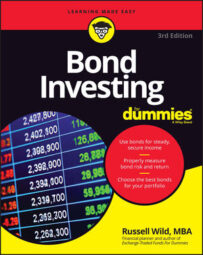Yield is what you want in a bond. Yield is income. Yield contributes to return. Yield is confusion! People (including overly eager bond salespeople) often misuse the term or use it inappropriately to gain an advantage in the bond market.
Don't be a yield sucker! Understand what kind of yield is being promised on a bond or bond fund, and know what it really means.
Coupon yield
This one is easy. The coupon yield, or the coupon rate, is part of the bond offering. A $1,000 bond with a coupon yield of 4 percent is going to pay $40 a year. A $1,000 bond with a coupon yield of 6 percent is going to pay $60 a year. Usually, the $40 or $60 or whatever is split in half and paid out twice a year on an individual bond.
Bond funds don't really have coupon yields, although they have an average coupon yield for all the bonds in the pool. That average tells you something, for sure, but you need to remember that a bond fund may start the year and end the year with a completely different set of bonds — and a completely different average coupon yield.
Current yield
Like coupon yield, current yield is easy to understand, at least on a superficial level. But a deeper level exists, and because of that, current yield is the most often misused kind of yield. In short, current yield is derived by taking the bond's coupon yield and dividing it by the bond's price.
Suppose you had a $1,000 face value bond with a coupon rate of 5 percent, which would equate to $50 a year in your pocket. If the bond sells today for 98 (in other words, it is selling at a discount for $980), the current yield is $50 divided by $980 = 5.10 percent. If that same bond rises in price to a premium of 103 (selling for $1,030), the current yield is $50 divided by $1,030 = 4.85 percent.
The current yield is a sort of snapshot that gives you a very rough (and possibly entirely inaccurate) estimate of the return you can expect on that bond over the coming months.
If you take the current yield for just one day (translated into nickels and dimes) and multiply that amount by 30, you'd think that would give you a good estimate of how much income your bond will generate in the next month, but that's not the case.
The current yield changes too quickly for that kind of prediction to hold true. The equivalent would be taking a measure of today's rainfall, multiplying it by 30, and using that number to estimate rainfall for the month. (Well, the current yield would be a bit more accurate.)
Worst-case basis yield
Usually a callable bond has not just one possible call date, but several. Worst-case basis yield (or yield-to-worst-call) looks at all possible yields and tells you what your yield would be if the company or municipality decides to call your bond at the worst possible time.
Callable bonds involve considerably more risk than noncallable bonds. If interest rates drop, your bond will likely be called. Your yield on the existing bond just dropped from what you expected, and you won't be able to reinvest your money for a like rate of return.
If interest rates have risen, the company probably won't call your bond, but you are stuck with an asset, if you should try to sell it, that has lost principal value. (Bond prices always drop when interest rates rise.)
The 30-day SEC yield
Because you have so many ways of measuring yield, and because bond mutual funds were once notorious for manipulating yield figures, the U.S. Securities and Exchange Commission (SEC) requires that all bond funds report yield in the same manner. The 30-day SEC yield, which attempts to consolidate the yield-to-maturity of all the bonds in the portfolio, exists so the mutual fund bond shopper can have some measure with which to comparison shop.
This measure isn't perfect, in large part because the bonds in your bond fund today may not be the same bonds in your bond fund three weeks from now. Nonetheless, the 30-day SEC yield can be helpful in choosing the right fund.

